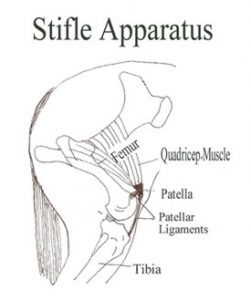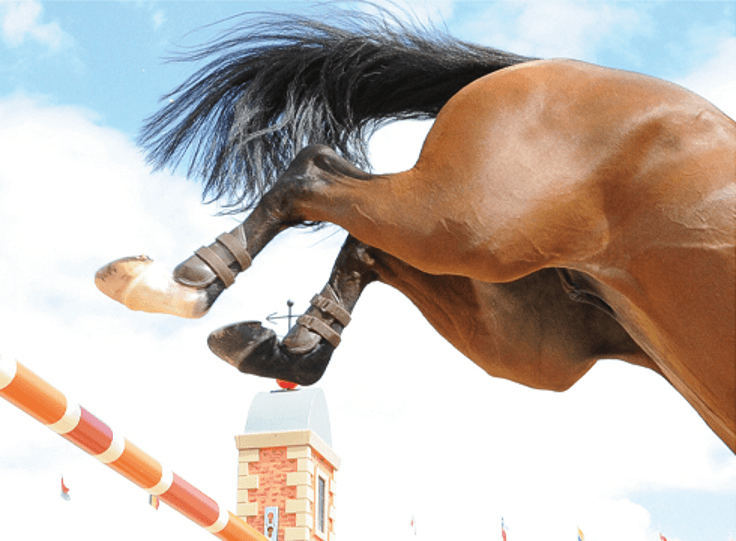Locking Stifle
Similar to the human knee, a horse’s stifle joints are like hinges—some of the largest in a horse’s skeletal system. Locking stifle problems can occur when a stifle joint becomes ‘locked’ due to overstraining or genetic joint problems. When the patella (kneecap) is unable to ‘unlock’, it means the patella is fixed in an upwards position. Be warned, a horse can panic when this happens, so it’s vital you stay calm and confident.
Causes
Locking Stifle is most common in ponies, foals and horses that are unfit, although the precise cause is still unknown. However, what we do know is that there are several contributing factors. These include :
- poor conformation
- lack of muscle strength in the hindquarters,
- hereditary conditions
Signs of a Locking Stifle
Locking stifle can vary in its severity. If your horse has a mild case, he may simply trip or stumble every now and again. More severe cases can result in him being unable to flex a hindleg and having to drag the offending limb. Don’t mistake a locked stifle for stringhalt. This neurological disease causes exaggerated and uncontrollable movement, sometimes making your horse jerk its hind leg up high while stepping.
Your vet can help you determine if any of the following signs indicate your horse has a locking stifle:
- dragging hind feet (maybe showing wear on the toe)
- reluctance to pick up feet
- resistance to moving on a circle
- kicking out for no apparent reason
- hopping
- resistance to cantering or cross canters
- swinging hind-leg to the outside while moving
- frequent stumbling or even falling
Prevention & Treatment Options for Locking Stifle
There are several treatment options. Whilst surgery is currently the only cure, there are options to help reduce the risk of an episode.
- Generally helping to improve muscle tone, particularly in the quadriceps, will help to support the surrounding joints.
- Trail Riding – increasing the distance and speed very slowly and over several weeks, will help a horse achieve its fitness level in a safe way.
- Exercise over cavalletti’s (raised trotting poles) is a great way to help improve muscle strength and suppleness.
- Lungeing your horse or hill work eg riding it on a slight incline so that it drives with its hindquarters also makes for safe training when done in small, slightly increased intervals.
- Feeding a high-quality joint supplement should also help. This will aid good joint health, as well as promoting the health of the soft tissues surrounding the joints.
Remember: Always discuss your strategy thoroughly with your vet before beginning any training regime.
A Liquid Solution providing Additional Help for Locking Stifle…
Fibregenix Joint & Bone RLF contains key ingredients to help nourish and protect joints. These include Glucosamine, Hyaluronic Acid, organic MSM and Rosa canina (rosehip). An additional benefit is the cutting-edge bone supplement of Calcium chelate and Vitamin D3.
The specific Ingredients in Joint & Bone RLF that assist with managing locking stifle:
- Organic MSM helps to provide the building blocks for protein, which are vital for tendon and ligament strength.
- Rosehip can aid the reduction of swelling within a joint. This may occur as a result of a locking stifle due to the joint being put under excess pressure.
Conclusion
Locking stifle is a problem that with the right approach can be managed and mitigated. It’s important you start slowly, avoid overworking your horse, and thoroughly discuss your strategy with a vet before beginning any new training regime.
Always consult with your vet if you have any concerns about the way your horse is moving.
Reviewed and amended April 2021

